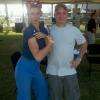Rocket crash
-
Members Online
- moodychief
- Rwsavory
- N201MKTurbo
- Justin Schmidt
- Dick Denenny
- Meshach
- Smiles201
- shawnd
- DXB
- Mark89114
- hphillips
- Hank
- Peter T
- warrenehc
- triple8s
- Blaze
- Skyland
- 1980Mooney
- 201er
- V1Rotate
- Denis Mexted
- eman1200
- BrettD
- bigmo
- Marc_B
- BillyT0020
- jhays2009
- Yan X
- dkkim73
- Scooter
- LooneyMooney
- Schllc
- TCC
- FoxMike
- Immelman
- gacoon
- Vulcan81
- Supereri73
- takair
- FLYFST
- HolyMicro
- MDMooney
- Phil EF
- Aerodon
- toto
- Rmfriday
- BFF78
- mmcdaniel33


Recommended Posts
Join the conversation
You can post now and register later. If you have an account, sign in now to post with your account.